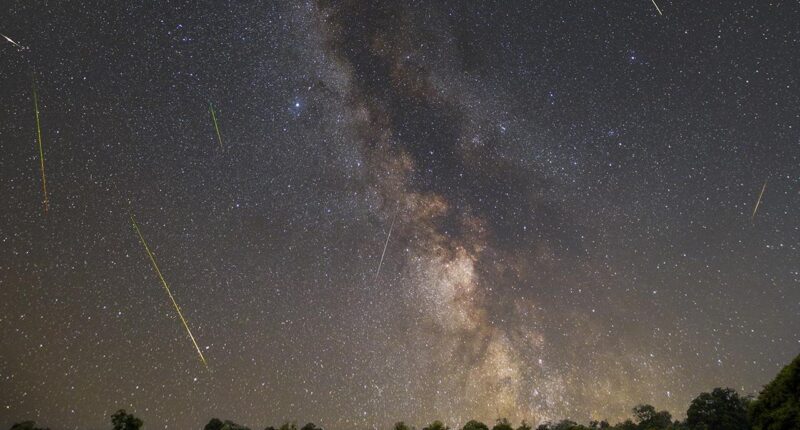ONE of the most “dramatic” meteor showers is headed for Earth’s skies tomorrow, where onlookers can see up to 100 shooting stars per hour.
The Perseid (Per-see-id) meteor shower will be at its peak between Saturday 12 and Sunday 13 of August.
The shower is the debris left behind Comet Swift-Tuttle, which comes around every 20 to 200 years, and last seen in 1992 (and in 1862, 1737 respectively).
The average speed for a Perseid meteor is around 36-miles-per-second, which will decorate the sky with fast, bright meteor trains.
Meteor trains appear when the air in front of the meteor is squashed and heated to thousands of degrees Celsius.
Smaller meteors then vaporise and leave behind a bright trail of light behind them, which the larger meteors can explode into fireballs.


Perseid is “one of the most dramatic things to see in the night sky between July and August,” according to the Royal Observatory Greenwich.
While the shower will peak this weekend, it will be active between 17 July and 24 August.
How do I see it?
To give yourself the best chance of seeing the shower, you should first check the weather forecast.
If it is likely to be wet and cold, it’s best to find a different location.
Most read in Tech
It’s also wise to choose a spot with little light pollution, and a view unobstructed by a skyline or trees.
“This could mean heading out to the countryside, a nearby park or even do something as simple as turning your back to street lamps if you are not able to go anywhere,” the Royal Observatory advises.
“Meteors can appear in any part of the sky so the more sky you can see the better.”
Give your eyes at least 15 minutes to adjust to the dark so that you can see the fainter meteors.
This means you need to put that phone screen down.
The best time to catch a glimpse of the display will be between midnight and 5:30am.
But for folks in the UK, you might even be able to spot them in early evening, as the sun sets.
Binoculars and telescopes won’t be necessary, as they will restrict the size of the sky that’s visible to you.
The patch of sky you want to be paying the most attention to is the horizon, the Royal Observatory explains.


“It is always favourable to try and spot meteors when the Moon is below the horizon or when it is in its crescent phase, because otherwise it will act as natural light pollution and will prevent the fainter meteors from being visible.
“The radiant of the Perseids is actually always above the horizon as seen from the UK, which means that observers in the UK should be able to see some meteors as soon as the Sun sets.”
Best Phone and Gadget tips and hacks

Looking for tips and hacks for your phone? Want to find those secret features within social media apps? We have you covered…
We pay for your stories! Do you have a story for The Sun Online Tech & Science team? Email us at [email protected]










